My first attempt was a bit of a misguided way to spend a Friday night.
I had bought some super thin enameled copper wire and blue 603 smd LEDs with the thinnest profile that I could find. Based on the Applied Science video, it seems like one of the biggest issues that he ran into was the thickness of assembly. Keeping everything nice and slim is going to be the real name of the game here. I figured that the best I could do would be to solder some leds in parallel Jacob's Ladder style, and then bend the wire into a ring. Once that was done I would then seal it between two contact lenses, leaving the wires poking of one side.
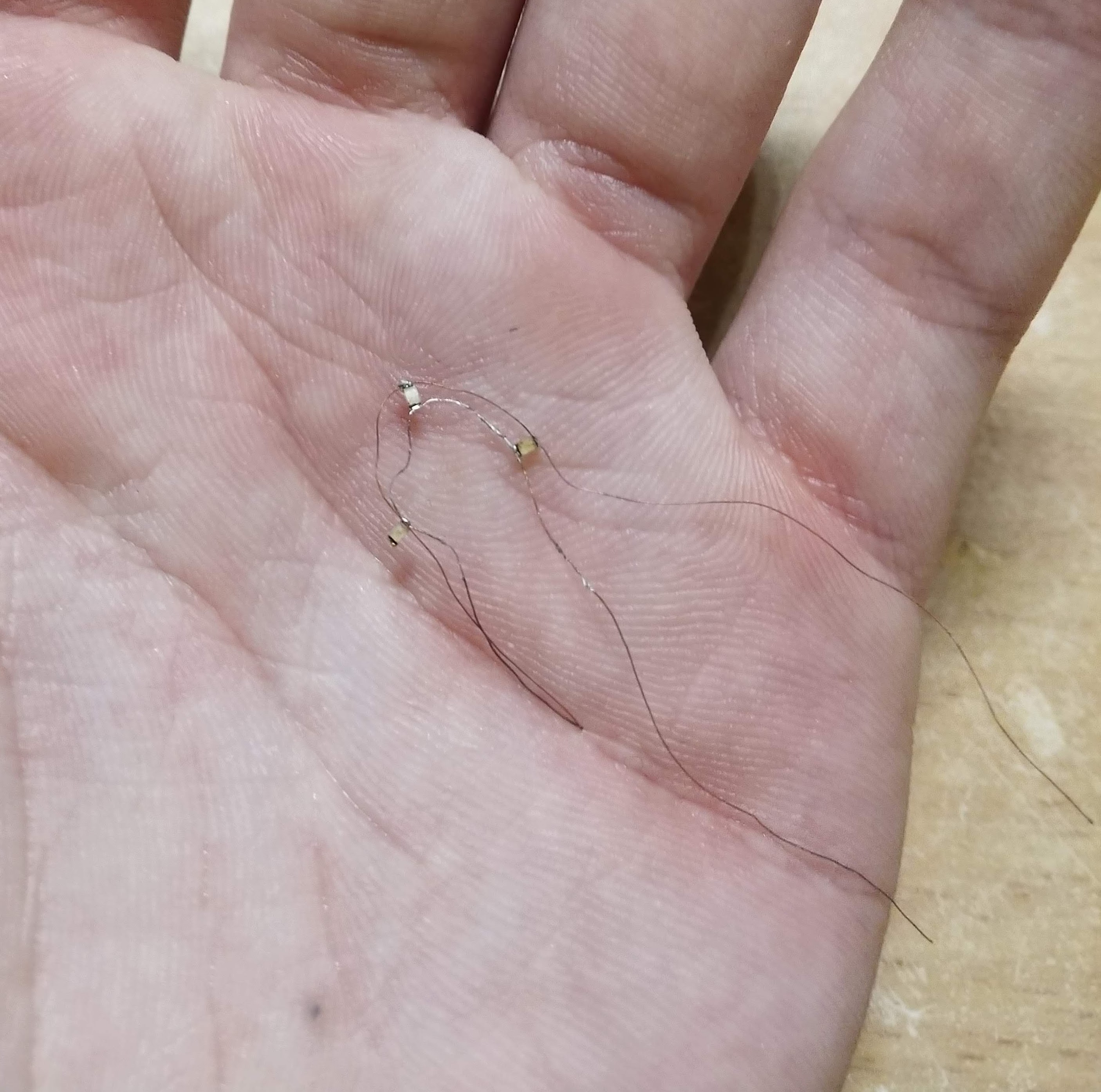
As you can see, that didn't work too well. I learned pretty quickly that bending straight things into a circle is generally pretty hard to do. This was pretty discouraging because I figured that this was my best chance at getting the thinnest lense assembly possible. I think that in the future I might try this approach again, but at this point I was getting sick of dealing with all these fiddly wires and opened up Eagle to vent my frustration into.
My intention was now to create the smallest and most flexible PCB that OSHPark would attempt to make. After eyeballing some measurements (heh), I whipped up a ring with leds evenly spaced and wired parallel . Unfortunately I lost the file, but not first before having a few made. The final result is below, with the 602 led in the middle for scale.
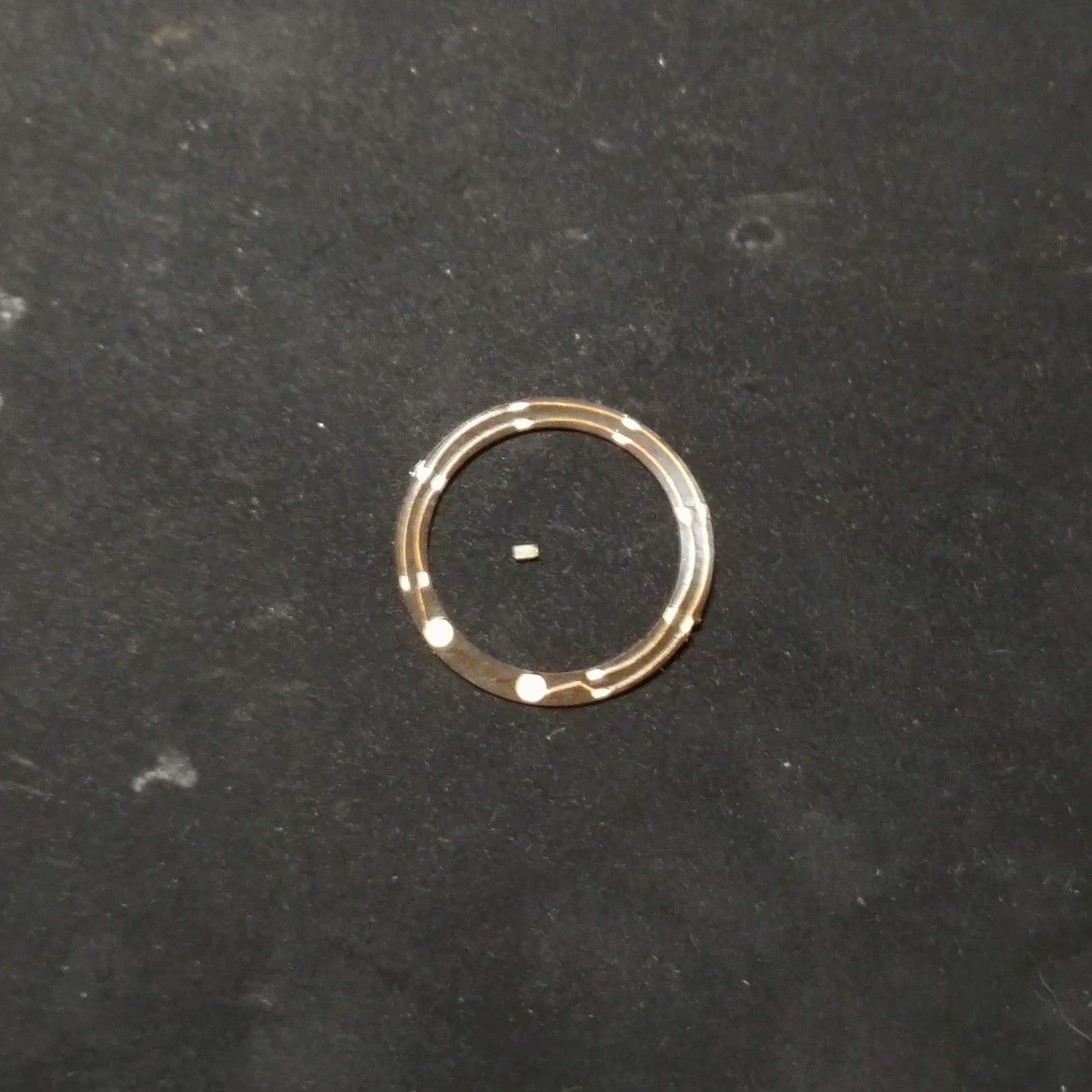
I was a bit nervous about how bright these little guys were going to be. I had to try to optimize voltage, luminocity, and thickness. Ideally the LEDs are just going to be wired up to little 3v watch batteries stuck to the side of the uses head. Unfortunately, the wires coming out of your eyeballs are going to hurt like the devil. The problem is that there really just isn't enough space on your eyeball to make the whole wireless power transmission work well. So killer eyeball wires it is!
Once I soldered everything and hooked it up, I was incredibly impressed with how much light these little guys put off!
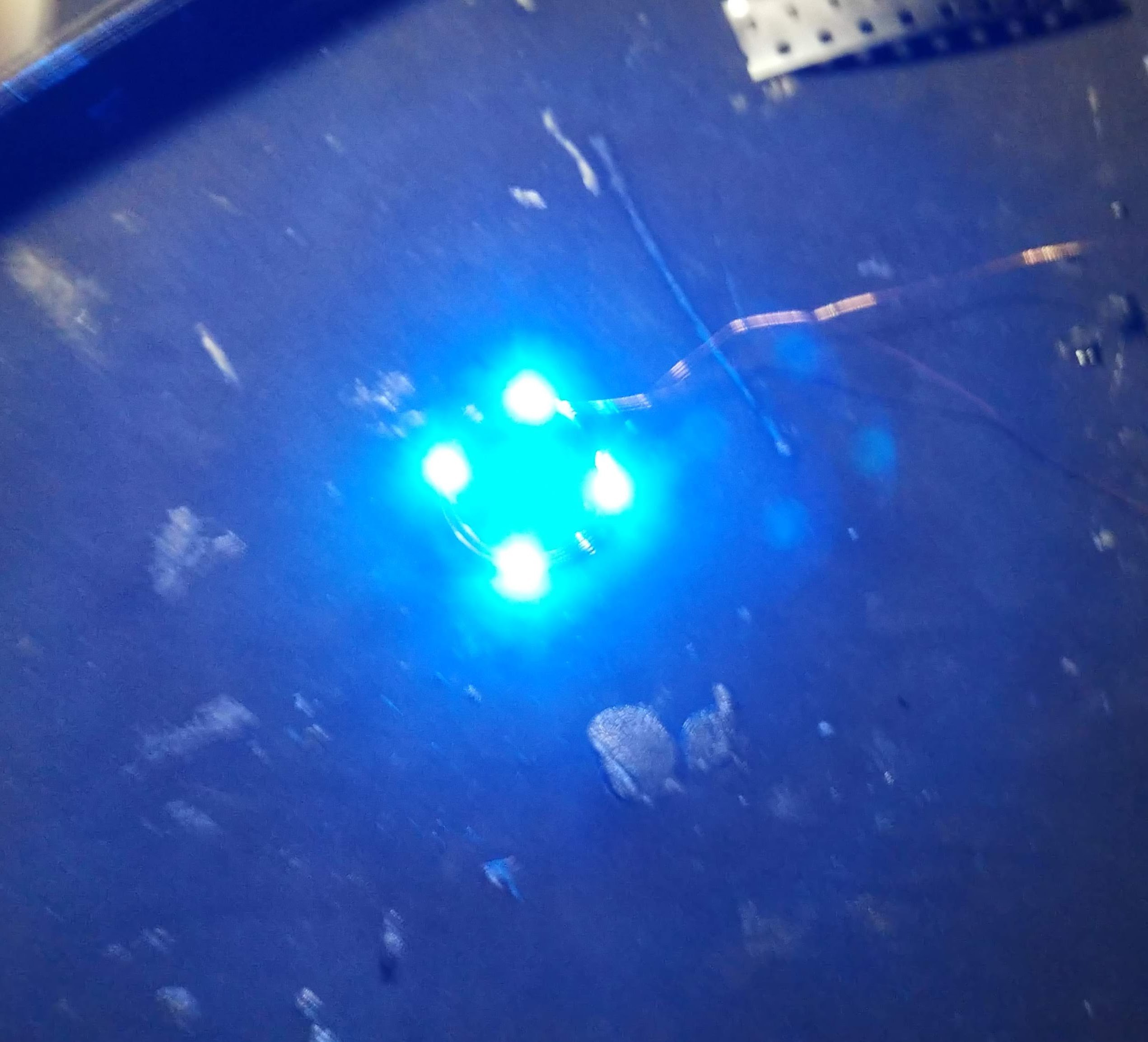
(Sorry for the shaky picture, I was just so excited!)
Now obviously the electronics side of this project was pretty trivial. So now it is more of a matter of how to actually get this light ring in your eye, thus catapulting you into the cyberpunk world of your dreams.
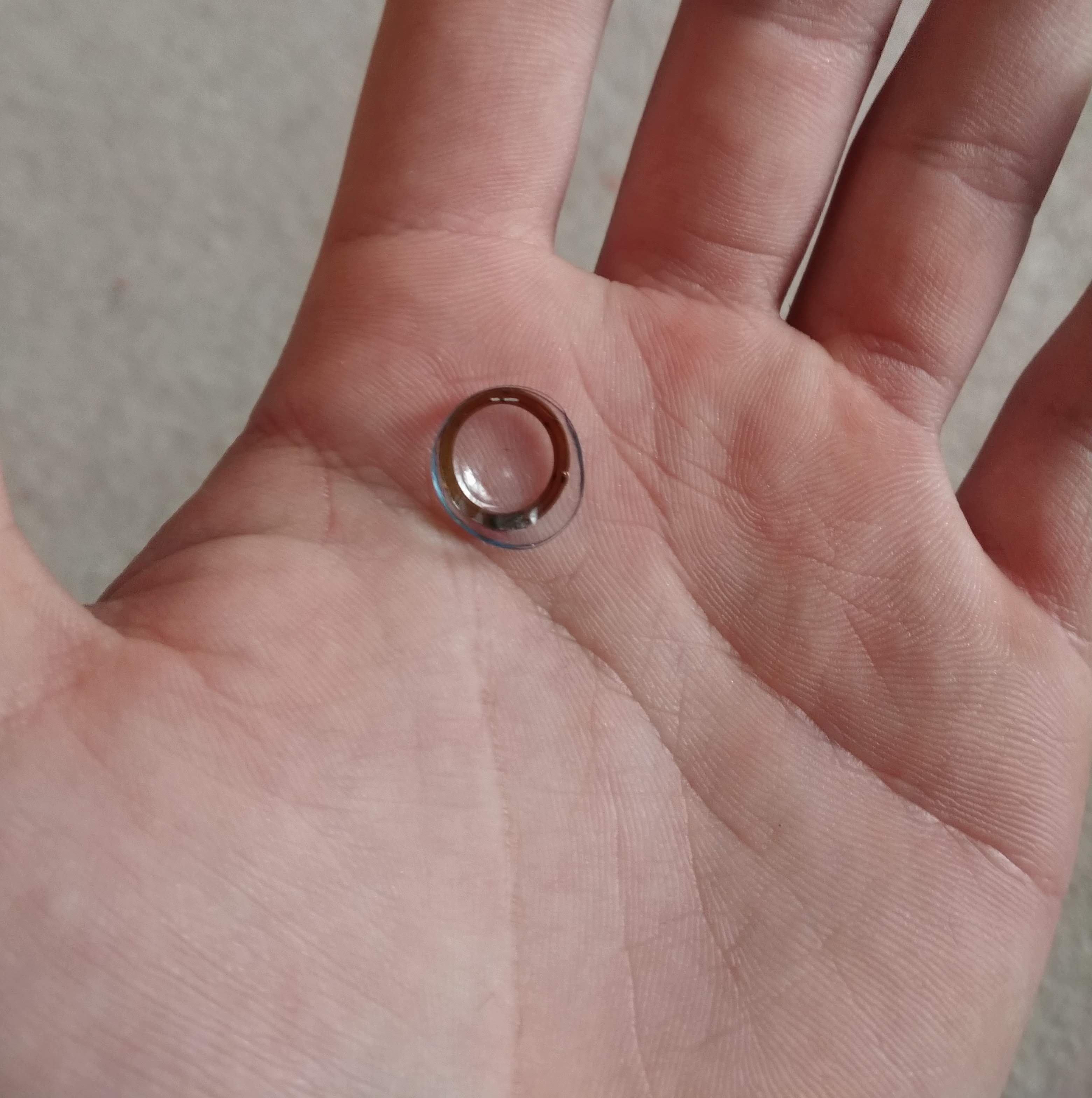
Right now the current method that we have come up with is to simply sandwich the ring into between two contact lenses. This only sort of works, and we still need to find out how to bond the two lenses together without clouding them and keeping them flexible. The other issue is that the ring should ideally be able to conform or match to the curvature of your eyeball, something either said than done. Right now method is to cut a gap into the ring, and then glue the two ends together. This causes the pcb to adopt somewhat of a conical shape, and it works to some degree. However it is far from an ideal solution.
Either way, we did in fact manage to get a test ring into my friend's eye, and I have to say, it looks pretty cool.
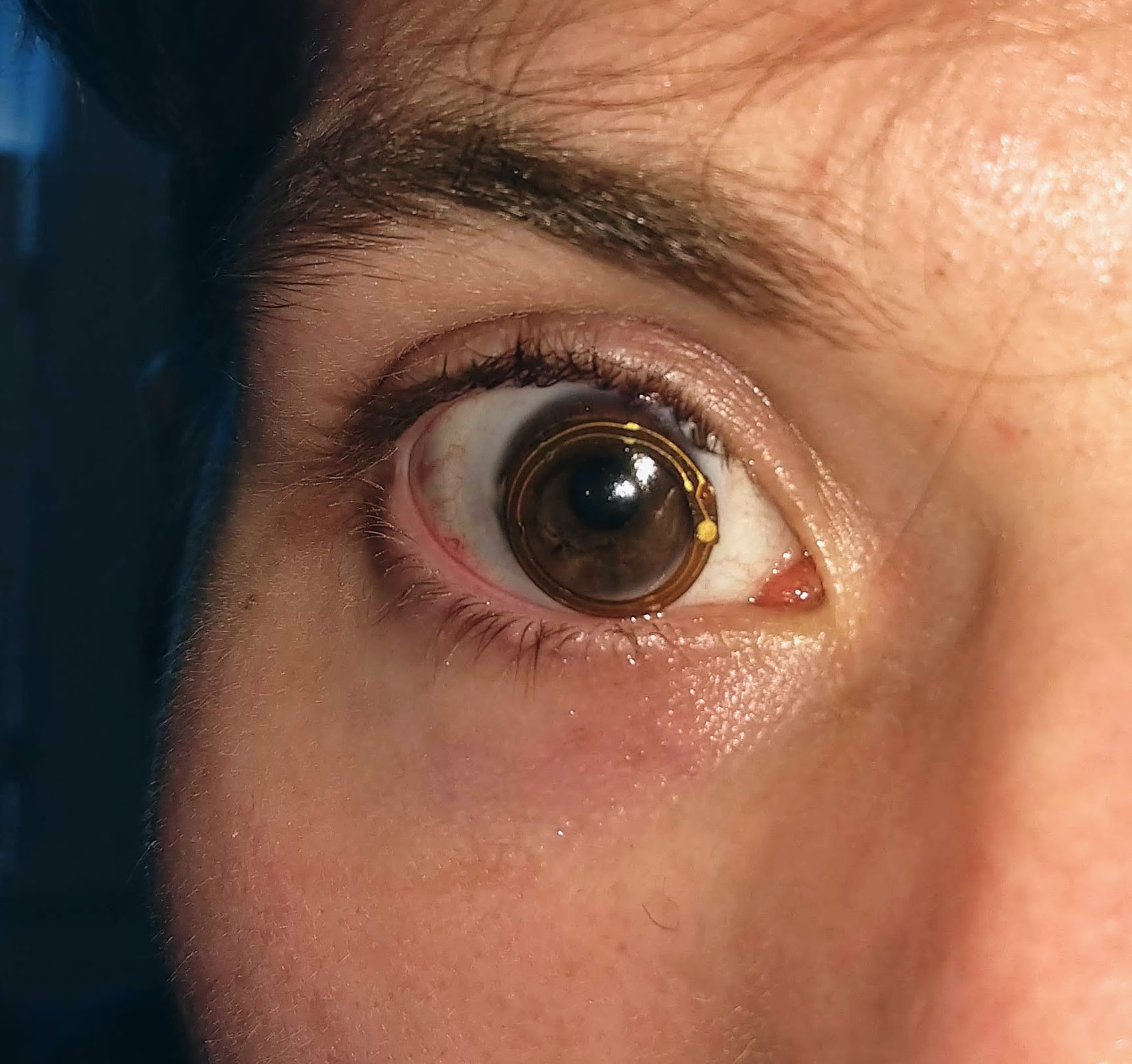
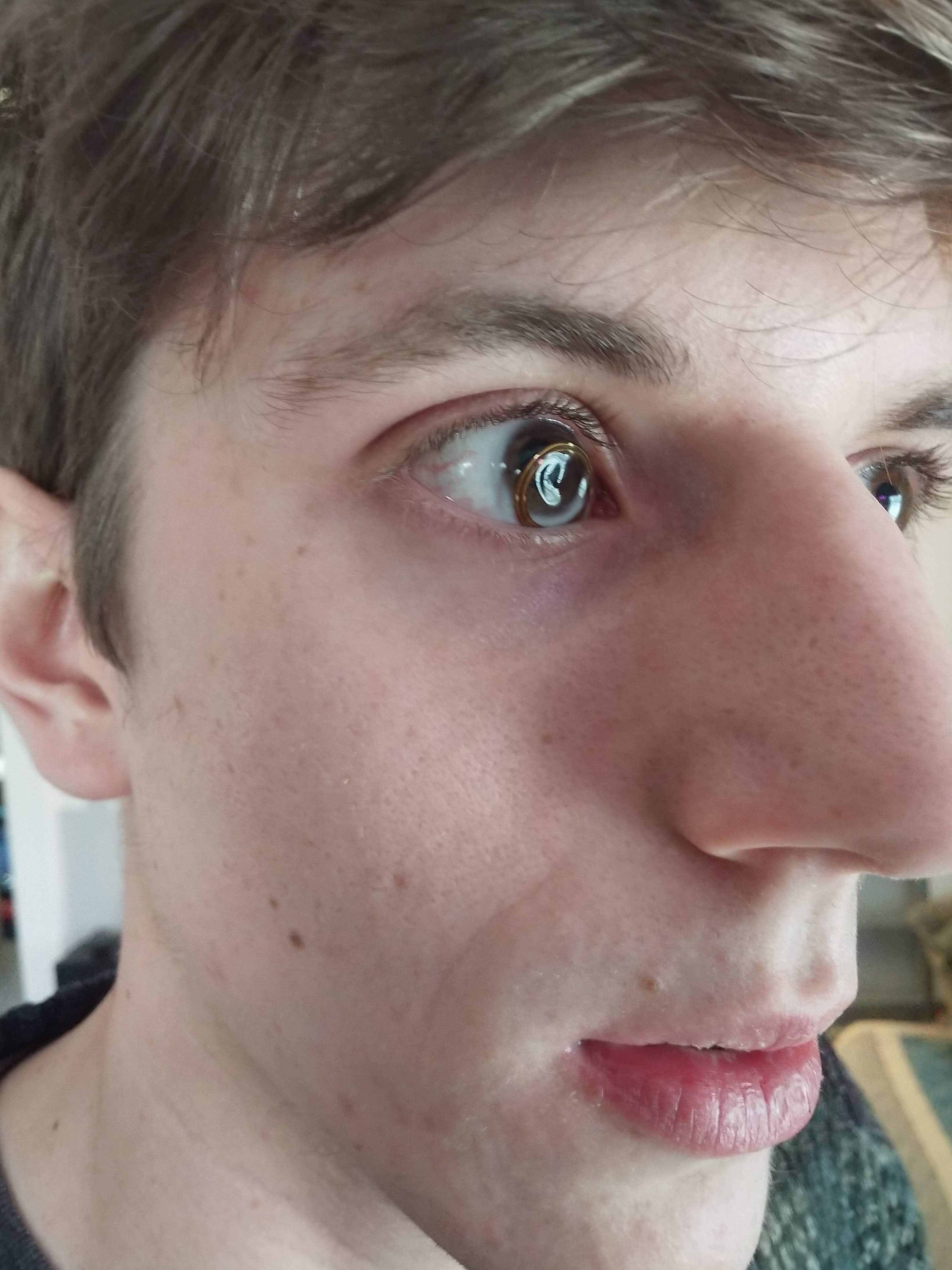
Obviously there is still a little ways to go before we all have glowing eyes, but like I said, it's a start. I plan on making another, thinner PCB and maybe trying to to use 302 leds to cut down on the material of the circuit board. As you can see in the picture above, the assembly is bulky enough that every time the user blinks, it get pushed down the eye, and sometimes even comes out entirely.
Also it should go without saying that there is some inherent danger in this project. Generally bright lights shining directly into eyeballs, and sharp objects near them are a recipe for disaster. However, it is worth noting that all of the light from the LEDs is shining directly out of the user's eye, so there is little danger of blinding yourself.
Let me know if you have any thoughts, suggestions, or words of warning!
 Chris
Chris
Discussions
Become a Hackaday.io Member
Create an account to leave a comment. Already have an account? Log In.